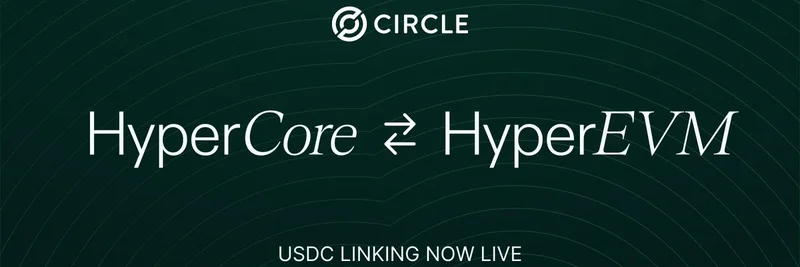TL;DR
- The ETH token at 0x04d491e8… on BNB Chain is a BEP-20 token, not native Ethereum ETH.
- It does not match the official Binance-Peg Ethereum Token address (which is 0x2170…F933F8).
- Treat it as a wrapped/pegged or project-specific token; verify thoroughly before using.
- Key risks include bridge security, centralization, smart contract bugs, depegging, and liquidity.
What this token is (and isn’t)
- Native ETH only exists on the Ethereum blockchain and pays gas there. On BNB Chain, any “ETH” you see is a token contract, typically a wrapped or bridged representation following the BEP-20 standard (BNB Chain’s version of ERC-20).
- The contract in question, 0x04d491e8… on BNB Chain, is labeled “ETH” but is distinct from Ethereum’s native ETH. On BNB Chain, token symbols can be reused by different issuers, so always verify by contract address.
Official Binance-Peg ETH vs. this address
- The widely recognized “official” BEP-20 representation of ETH on BNB Chain is the Binance-Peg Ethereum Token at contract 0x2170Ed0880ac9A755fd29B2688956BD959F933F8.
- The provided address 0x04d491e828786aedf0f0cea070c33cbefaf98fd6 does not match that official contract. That doesn’t automatically mean it’s malicious, but it does mean you should proceed with caution and verify independently via BscScan and the project’s official channels.
How wrapped/pegged ETH works (quick primer)
- Blockchains are siloed by default, so assets don’t natively move between chains. Bridges solve this by locking the original asset on its home chain and minting a representation on the destination chain.
- For ETH moving to BNB Chain, the bridge typically escrows ETH on Ethereum and issues a BEP-20 token on BNB Chain. Ideally, the supply on BNB Chain is backed 1:1 by reserves.
- When “unwrapping,” the BEP-20 tokens are burned on BNB Chain and the original ETH is released on Ethereum.
Why BEP-20 matters
- BEP-20 is an EVM-compatible standard similar to ERC-20, enabling familiar functions like transfer and approve on BNB Chain. Learn more in the BEP-20 spec.
Key risks to consider
- Centralization and custody: Many bridge/pegged tokens depend on a centralized custodian. If reserves are compromised or inaccessible, the peg can break.
- Bridge exploits: Cross-chain bridges are frequent targets due to their complexity and large TVL. Incidents can cause losses or depegging.
- Smart contract bugs: Unverified or unaudited contracts may have minting flaws or logic bugs that harm holders.
- Depegging and liquidity: Even if designed for 1:1 value, market stress can push wrapped tokens off-peg. Thin liquidity can worsen slippage and price impact.
- Symbol confusion: “ETH” is a common symbol; scammers may deploy lookalikes. Never rely on symbol/name alone—always verify the exact contract address.
How to verify this token
- Check BscScan:
- Contract page: 0x04d491e8…
- Look for a verified source code, official website, socials, and audit links.
- Review holders, recent transactions, and any mint/burn activity.
- Compare contracts:
- Official Binance-Peg ETH is 0x2170Ed0880ac9A755fd29B2688956BD959F933F8. If you expected that asset, don’t use a different contract.
- Review documentation:
- Does the token link to a credible project site or docs that explain the issuance/bridge and reserves?
- Audit status:
- Seek audits by reputable firms like CertiK or PeckShield. No audit is not a deal-breaker but increases risk.
Common ways people use BEP-20 ETH representations
- DeFi: Trading and liquidity on BNB Chain DEXs like PancakeSwap.
- Lending/borrowing: Protocols such as Venus, subject to listings and risk parameters.
- Payments: Within specific dApps that accept the token.
Trading and tracking options
- If you decide to interact with the token, use trusted venues and always confirm the contract address before swapping:
- DEX: PancakeSwap (verify the exact contract in the pair details)
- CEX: Binance if the specific asset/bridge variant is listed
- Analytics and trading: GMGN.AI for real-time price action, smart money tracking, and fast execution tools
- Tip: Double-check slippage and token tax settings, and test with a small amount first. Use token “info” panels to spot red flags (pauseable transfers, blacklist functions, high fees).
Practical checklist before you buy
- Contract match: Does the contract address exactly match what the project or bridge lists publicly?
- Liquidity health: Is there deep, locked liquidity on the main trading pools? Who controls it?
- Reserves/peg: If it’s a bridged asset, is there transparent proof of reserves and a known bridge?
- Code and controls: Is the code verified? Are there owner-only functions that can mint or block transfers?
- Community footprint: Are the website, docs, and socials active and consistent?
Bottom line
- The ETH token at 0x04d491e8… on BNB Chain is a BEP-20 token and not native Ethereum ETH. It is different from the widely recognized Binance-Peg ETH at 0x2170…F933F8, so handle it with extra diligence.
- Wrapped/bridged tokens can be useful for lower fees and faster transactions on BNB Chain, but they introduce bridge, custody, and smart contract risks. Verify first, size positions conservatively, and stick to reputable platforms and tools when you trade or track this asset.


